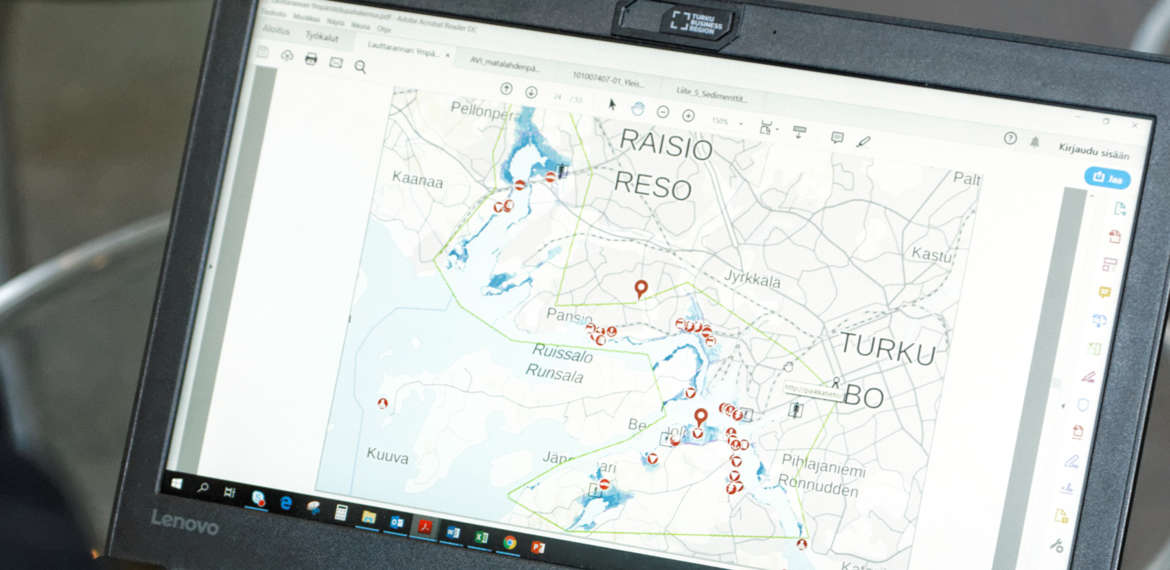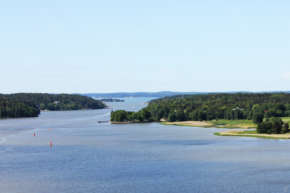Dredging masses are reused in earthworks in Turku
Turku Science Park is studying the utilisation of dredging masses and other excess soil in earthworks. It takes place as part of the CircVol project started in 2018 which aims at more efficient use of different land masses, such as clay, rock materials and industrial products, and at saving the earth’s dwindling natural resources for future generations, too.

The project advances the theme of sustainable earthworks in cities and opens up an opportunity for businesses to be involved in infrastructure construction projects. More than 100 million tonnes of rock materials are annually used in construction in Finland. Part of that volume could be replaced with recycled soil, industrial by-product flows, and more challenging soil fractions, such as clay and dredging masses.
Pilot study focuses on use of clay
Started on 28 March, the Savimaat (clay soil) pilot searches for new places of use for clay soil generated in earthworks. Methods for the stabilisation of soil are already being studied in the Turku University of Applied Sciences, and testing is being carried out in the soil material park of Kiertomaa Oy.

”The utilisation of clay soil is difficult, because its technical and chemical properties are not well suited to construction. Clay is soft and may cause acidic drainage in the environment. Large volumes of extra clay soil are generated in coastal regions, so their placement results in high costs. The project alters the properties of clay materials by adding new materials, such as ashes from power plants, blast furnace slag, lime-based industrial by-product flows or other dry materials which help to improve the bearing capacity of clay soil and keep the pH close enough to neutral”, says Senior Advisor Julius Manninen from Turku Science Park Ltd.
Dredging masses used in building the foundation for a new residential area
The first concrete location for disposal of clay soil is the Lauttaranta district in Turku which will be made an area suited for residential construction. By placing the sediments accumulated from dredging in embankment pools to be built on current alluvial land, it is possible to build a new district with blocks of flats on the seaside in the Latokari area. The environmental permit for pre-construction in the area is pending. Pre-construction includes the construction of the seaside embankment, dredging of the barge fairway, filling of the water area, and reuse of the dredging masses and excess soil. The binding agents for stabilisation will include both commercial and novelty binding agents, such as e.g. ashes of power plants and gypsum waste.
”All masses brought to the Lauttaranta area are suited for disposal on land. The content of harmful substances is below the limits set for residential construction, and stabilisation will prevent the dissolving of harmful substances into the soil and sea. That ensures the safety of living and prevents any environmental damage”, Julius Manninen assures.
Opportunity for new business to companies
In addition to reducing environmental loading, the project promotes business operations in circular economy and supports the transition from a linear value chain to a circulating model.
Many different materials can be used in improving the properties of clay soil. Companies that have e.g. materials in accordance with the Government Decree on the Recovery of Certain Wastes in Earth Construction can join the pilot. Large volumes of clay soil are being generated, so the potential for its reuse is also high. In the pilot project, companies get help for the utilisation of their by-product flows, because the client parties comprising of cities and municipalities also hope for better utilisation of novelty materials.
”The recycling of land masses generates financial benefit to all participants of the project. Companies will save costs as materials need not be taken to the refuse tip. Public sector actors, such as cities can utilise the recycled land masses in infrastructure construction as well as the introduction of new construction areas. For example, the selling of the land area to be generated in the Latokari area for plots may cover all costs of pre-construction”, Julius Manninen says about the financial benefits of the CircVol project.
Teksti: Kari Ahonen
Kuvat: Markku Koivumäki
CircVol project
- Joint project of companies, universities, research organisations and the public sector for promoting circular economy
- 11 project partners: Turku Science Park Ltd, Turku University of Applied Sciences, Regional Council of Southwest Finland, City of Helsinki, City of Oulu, Åbo Akademi University, University of Tampere, Oulu University of Applied Sciences, Forum Virium, Finnish Environment Institute, and Geological Survey of Finland
- Project period 2018–2020
- Budget 2.8 million euros, partly financed by the European Union’s ERDF


